A PDF floor plan is a detailed visual representation of a building’s layout, offering clarity and precision in architecture and real estate. It serves as a blueprint for understanding spatial arrangements, making it an essential tool for designers, architects, and clients to communicate effectively.
Definition and Purpose
A PDF floor plan is a visual representation of a building’s layout, detailing rooms, dimensions, and spatial relationships. It serves as a blueprint for understanding and communicating architectural designs. Primarily used in architecture and real estate, PDF floor plans provide clarity and precision, aiding in space planning, furniture arrangement, and construction projects. They are scalable, print-ready, and easily shareable, making them a reliable format for professionals and clients to collaborate effectively. The purpose of a PDF floor plan is to convey detailed spatial information accurately, ensuring seamless communication and execution of design vision.
Importance in Architecture and Real Estate
PDF floor plans are indispensable in architecture and real estate, offering precise visualizations that facilitate design and communication. Architects utilize them to present detailed layouts, enabling accurate spatial planning and design adjustments. In real estate, PDF floor plans enhance property marketing by providing potential buyers with a clear understanding of a space. They also streamline collaboration among stakeholders, ensuring alignment on project goals. Their ability to be easily shared and printed makes them a vital tool for professionals seeking to convey complex spatial information effectively and efficiently in both industries.
Key Features of a PDF Floor Plan
A PDF floor plan typically includes detailed layouts of rooms, doors, windows, and walls, providing a clear overview of a space. It often incorporates precise measurements, scale, and labels for clarity. Many PDF floor plans are created using specialized tools like Planner 5D or EdrawMax, which offer libraries of furniture and decor for customization. Advanced features may include 3D visualization options, allowing users to explore spaces from different angles. The ability to export and print these plans at scale makes them ideal for architectural and real estate purposes, ensuring professionalism and precision in every design.
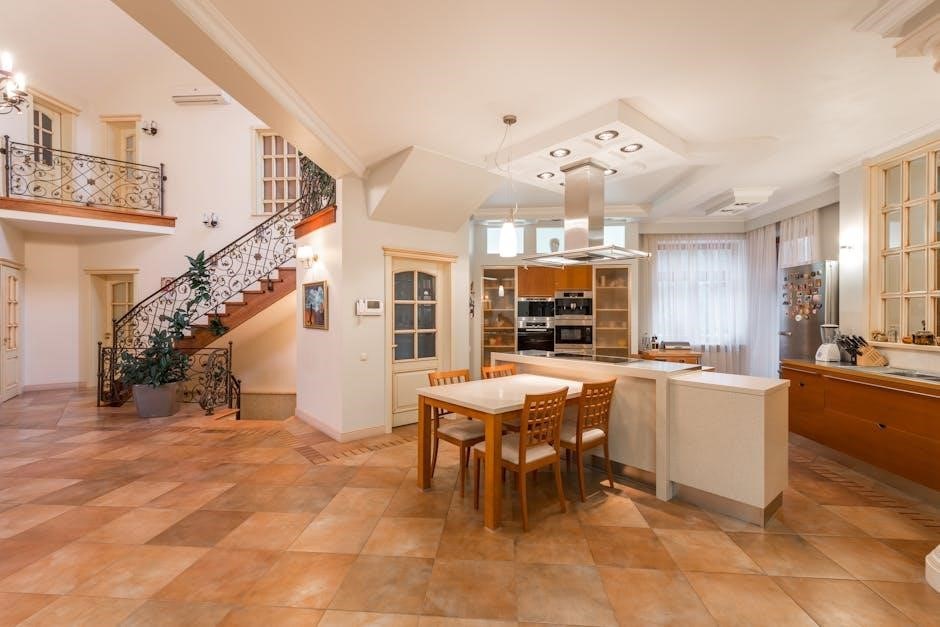
Best Tools for Creating PDF Floor Plans

Creating PDF floor plans is easy with tools like Planner 5D, Floor Plan Maker, and EdrawMax Online. These web-based platforms offer templates, drag-and-drop functionality, and precise design features.
Planner 5D: Free Floor Plan Creator
Planner 5D is an innovative, web-based tool designed for creating professional-grade floor plans without requiring technical expertise. It offers a vast library of furniture and decor items, enabling users to design interiors with precision. The drag-and-drop functionality simplifies the process, allowing for quick and intuitive layout creation. Users can visualize their designs in both 2D and 3D, making it an excellent choice for homeowners, architects, and real estate professionals. Planner 5D supports PDF exports, ensuring high-quality, print-ready designs that are easily shareable.
Floor Plan Maker for All Types of Projects
Cedreo’s floor plan maker is a versatile online tool designed for builders, contractors, and interior designers. It allows users to create precise, professional-grade layouts for various projects, from residential homes to commercial spaces. The tool offers a user-friendly interface with drag-and-drop functionality, ensuring accuracy and efficiency. With Cedreo, users can design custom floor plans tailored to specific needs, making it ideal for remodeling, construction, and interior design projects. Its ability to handle diverse projects ensures flexibility and scalability, making it a reliable choice for professionals and DIY enthusiasts alike.
EdrawMax Online: Free Floor Plan Creator
EdrawMax Online is a powerful yet free floor plan creator that offers intuitive tools and AI-powered features. It provides a vast library of templates and symbols, making it easy to design professional-grade floor plans. Users can create detailed layouts for homes, offices, or any space, and export them in formats like PDF, JPEG, and DXF. The platform is ideal for both professionals and casual users, allowing them to visualize spaces, add furniture, and even generate 3D models. Its simplicity and versatility make it a top choice for creating precise and visually appealing floor plans.
Arcadiums Free Floor Plan Creator
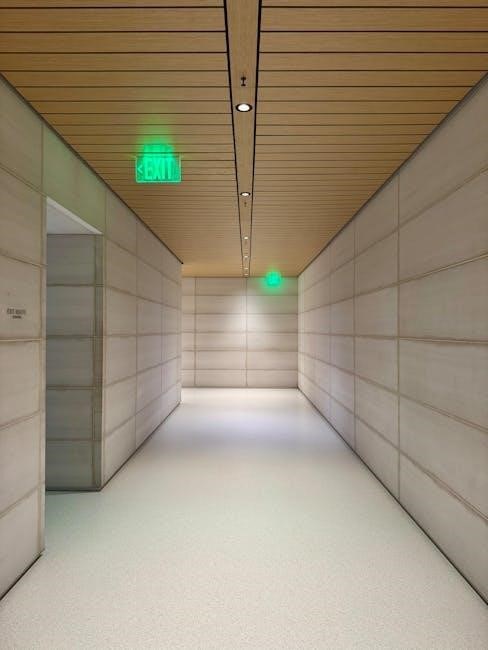
Designing a Floor Plan
Designing a floor plan involves creating a detailed layout of a space, using tools like templates, drag-and-drop features, and 3D visualization to ensure accuracy and functionality for various projects.
Step-by-Step Guide to Creating a Floor Plan
Start by selecting a template or drawing from scratch using tools like Planner 5D or EdrawMax Online. Measure the space and input dimensions for accuracy. Draw walls to define rooms, then add doors, windows, and architectural features. Incorporate furniture and decor to visualize the interior. Adjust layouts to meet specific needs, ensuring functionality and aesthetics. Finally, export the design as a PDF, DXF, or other formats for sharing or printing. This process ensures a professional and detailed floor plan tailored to your project requirements.
Choosing the Right Template
Selecting the right template is crucial for creating an effective floor plan. Browse libraries in tools like Planner 5D or EdrawMax Online to find layouts that match your project type, whether residential, commercial, or custom designs. Consider the size and complexity of your space to ensure the template aligns with your needs. Customize the template by adding or removing elements to reflect your vision. Ensure the template is scalable and adaptable for future edits. A well-chosen template streamlines the design process, saving time and ensuring professional results for your PDF floor plan.
Adding Furniture and Decor
Enhance your PDF floor plan by adding furniture and decor to visualize interior spaces accurately. Use tools like Planner 5D or EdrawMax Online to access extensive libraries of items, from sofas to lighting fixtures. Drag-and-drop functionality allows easy placement, enabling you to experiment with layouts. Customize sizes, colors, and orientations to match your design preferences. This feature is invaluable for interior designers and homeowners alike, helping to create a realistic representation of a space. It also aids in planning and making informed decisions during renovations or furniture purchases, ensuring your vision aligns with the final result.
Visualizing in 3D
Transform your PDF floor plan into a 3D model to gain a immersive understanding of the space. Tools like Planner 5D and Arcadiums allow seamless conversion of 2D layouts into 3D visuals, enabling you to explore rooms from every angle. This feature is particularly useful for interior designers and architects to present ideas to clients. With 3D visualization, you can experiment with furniture arrangements, lighting, and textures in real-time. It enhances decision-making and provides a lifelike preview of the final design, making it easier to communicate your vision effectively to stakeholders and clients alike.
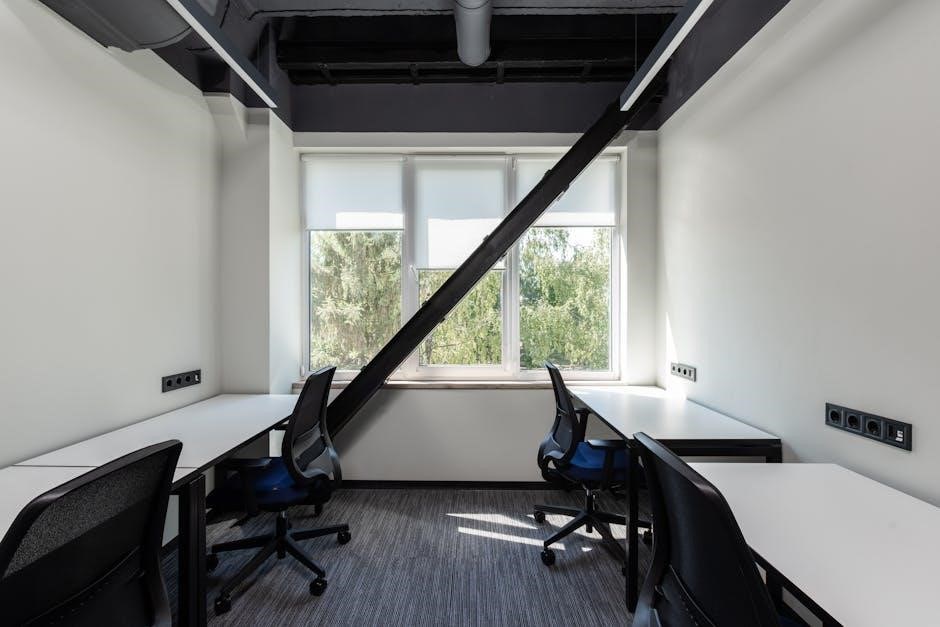
Converting and Editing PDF Floor Plans
How to Convert PDF to Editable Formats
Using Illustrator for PDF Floor Plan Editing
Adobe Illustrator is a powerful tool for editing PDF floor plans. Import the PDF and convert it into vector shapes for precise modifications. Use the pen tool to adjust walls, doors, and windows. Layers can be organized to separate elements like furniture or measurements. Scale the design accurately using the scale tool. Add text annotations for room labels or dimensions. After editing, export the file as a PDF, DXF, or SVG for compatibility with other software. Illustrator ensures professional-grade edits, making it ideal for architects and designers needing detailed adjustments to floor plans.
Exporting Floor Plans to PDF, DXF, and Other Formats
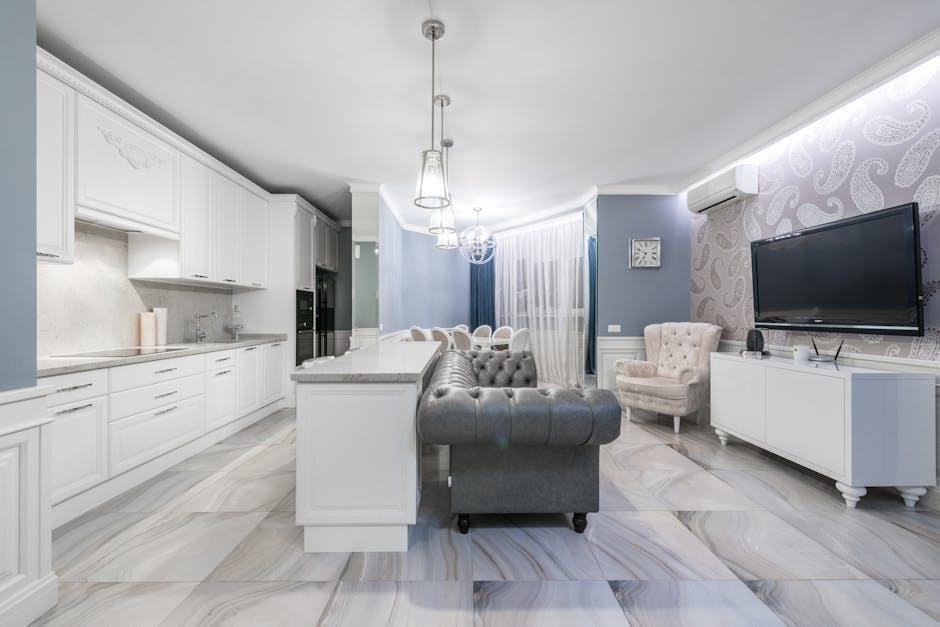
Advanced Features of PDF Floor Plans
Advanced features include adding precise measurements, incorporating architectural details, and generating 3D models from 2D layouts. These enhancements provide detailed visualizations and functional designs for professional use.
Adding Measurements and Scale
Adding measurements and scale to a PDF floor plan ensures accuracy and professionalism. This feature allows users to include precise dimensions, room sizes, and distances, making it easier for contractors and designers to visualize the space. Tools like Planner 5D and EdrawMax enable users to add annotations and set scale ratios, ensuring that the floor plan is both functional and print-ready. This capability is crucial for construction projects, as it provides a clear reference for implementing designs effectively. Incorporating measurements also aids in furniture placement and spatial planning, enhancing the overall utility of the floor plan document.
Incorporating Architectural Features
Incorporating architectural features into a PDF floor plan enhances its detail and functionality. Elements like doors, windows, staircases, and columns can be added to provide a comprehensive view of the space. Tools such as Floor Plan Maker and Arcadiums allow users to include these features, ensuring the plan accurately reflects the building’s structure. Additionally, annotations and symbols can be added to highlight specific design elements, making the floor plan more informative for both professionals and clients. This level of detail aids in better visualization and decision-making during architectural and interior design processes.
Generating 3D Models from Floor Plans
Generating 3D models from PDF floor plans allows for immersive visualization of spaces. Tools like Planner 5D and Arcadiums enable users to convert 2D layouts into 3D models, enhancing design understanding. This feature is particularly useful for architects and designers to communicate ideas effectively. By importing floor plans into specialized software, users can explore virtual walk-throughs and adjust elements in real-time. The integration of 3D modeling with floor plans streamlines the design process, making it easier to identify spatial relationships and plan interiors efficiently. This capability is a significant advancement in modern architectural and real estate applications.
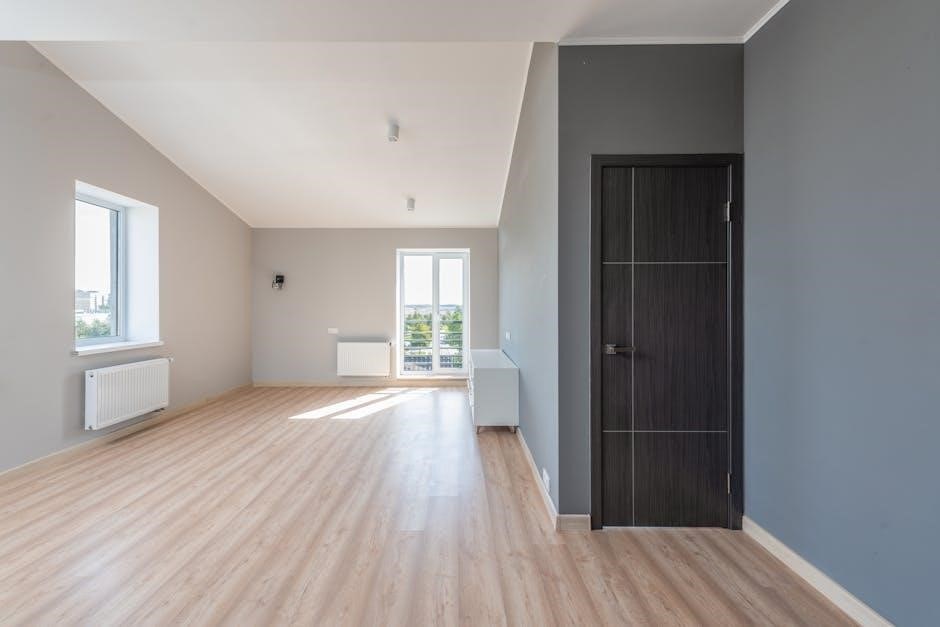
Real-World Applications of PDF Floor Plans
PDF floor plans are essential for real estate marketing, interior design, and construction projects. They provide clear layouts, enabling precise measurements and effective space visualization. Widely used by architects, designers, and contractors, PDFs ensure professional-grade outputs for various applications.
Use in Real Estate Marketing
PDF floor plans are invaluable in real estate marketing, providing buyers with a clear visual understanding of a property’s layout. Agents and sellers can highlight key features like room dimensions, door and window placements, and spatial relationships. These plans enhance online listings, making properties more attractive to potential buyers. PDFs are easily shareable and maintain high-quality resolution, ensuring professional presentation. They also facilitate virtual tours and open houses, allowing buyers to plan furniture arrangements and visualize their future space effectively. This clarity aids decision-making, making PDF floor plans an essential tool for successful real estate marketing strategies.
Interior Design and Furniture Planning
PDF floor plans are a cornerstone in interior design, enabling precise furniture placement and space optimization. Designers use these plans to visualize room layouts, ensuring furniture fits perfectly and aligns with the space’s aesthetic. The ability to add furniture symbols and measure dimensions directly on the PDF allows for accurate planning. This tool aids in creating cohesive designs, making it easier to experiment with different layouts before implementation. PDF floor plans also serve as a reference during shopping, helping clients and designers verify if new pieces will fit seamlessly into the intended space, enhancing the overall design process.
Construction and Renovation Projects
PDF floor plans are crucial in construction and renovation projects, providing a clear blueprint for contractors and architects. These plans detail room dimensions, structural elements, and spatial relationships, ensuring accurate execution. During renovations, PDFs help visualize changes, such as wall removals or layout adjustments. Contractors can use these files to measure materials and plan workflows efficiently. Additionally, PDF floor plans are easily shared and accessed on-site, making them a vital tool for ensuring projects stay on track and meet design specifications, ultimately contributing to successful and stress-free construction or renovation outcomes.
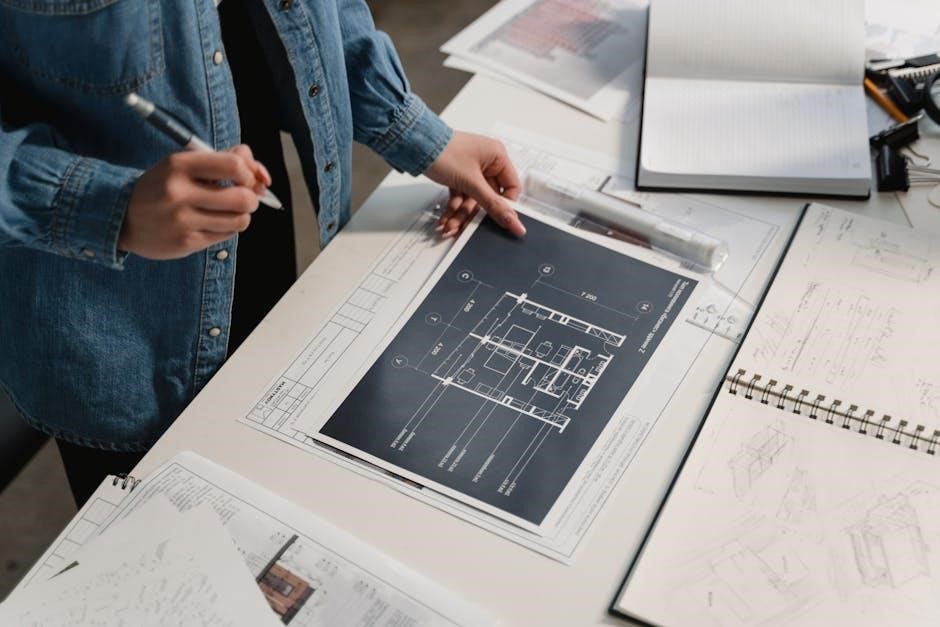
Customizing Your Floor Plan
Effortlessly tailor your space with drag-and-drop functionality, import images or files, and adjust layouts to meet specific needs, ensuring a personalized and precise design outcome.
Using Drag-and-Drop Functionality
Drag-and-drop functionality simplifies floor plan customization, allowing users to effortlessly add furniture, doors, and other elements. This intuitive feature enables precise placement and adjustment of items, streamlining the design process. With real-time previews, users can instantly see how changes impact the layout, making it ideal for both professionals and novices. Many tools, like Planner 5D and Arcadiums, offer this feature, ensuring a seamless and user-friendly experience. By dragging and dropping elements, users can create detailed, accurate floor plans tailored to their specific needs, enhancing creativity and efficiency in interior design and space planning.
Importing Images and Files
Importing images and files into your PDF floor plan enhances customization by allowing the integration of specific designs or pre-drawn elements. Tools like RoomSketcher and EdrawMax support importing JPG, PNG, and even CAD files, enabling users to incorporate custom furniture or architectural details. This feature is particularly useful for professionals who need precise representations or for homeowners wanting to visualize specific decor. By importing images, users can ensure that their floor plans accurately reflect their vision, making the design process more flexible and adaptable to individual needs and preferences, ultimately leading to more personalized and detailed layouts.
Adjusting Layouts for Specific Needs
Adjusting layouts for specific needs ensures that PDF floor plans meet unique requirements, such as commercial spaces, residential homes, or specialized rooms. Tools like Planner 5D and EdrawMax allow users to tweak room dimensions, rearrange walls, and customize interior elements to suit particular purposes. This flexibility enables architects and designers to adapt layouts for accessibility, ergonomic workflows, or aesthetic preferences. By modifying elements like door placements, staircases, or custom furniture arrangements, users can create tailored designs that enhance functionality and appeal, ensuring the final floor plan aligns with the intended use and user expectations for any project.

Why Choose PDF for Floor Plans?
PDF floor plans offer professional, print-ready output, ensuring consistency across devices. Their security, compatibility, and universal acceptance make them ideal for sharing and professional use in architecture and real estate.
Advantages Over Other Formats
PDF floor plans stand out for their professional, high-quality output and compatibility across all devices. They maintain consistency in layout and design, unlike editable formats that may shift when opened on different software. PDFs are also secure, as they can be password-protected to prevent unauthorized modifications. Their vector graphics ensure crisp visuals at any scale, making them ideal for print and digital sharing. Additionally, PDFs often include interactive features like 3D views, enhancing user experience. Their universality and reliability make them the preferred choice for architects, designers, and real estate professionals to present and share floor plans effectively.
Compatibility and Sharing
PDF floor plans are universally compatible, accessible on any device without requiring specific software. This makes them ideal for sharing between architects, contractors, and clients. They can be easily emailed, uploaded to cloud storage, or shared via platforms like Floorplanner. PDFs maintain their formatting across different operating systems, ensuring consistent viewing. This universal accessibility simplifies collaboration and communication, especially in professional settings. Additionally, PDFs can be exported from various tools like RoomSketcher or EdrawMax, making them a versatile format for seamless sharing and presentation of floor plans.
Professional and Print-Ready Output
PDF floor plans deliver professional and print-ready output, ensuring high-quality visuals and precise details. They are ideal for presenting designs to clients or stakeholders, as they maintain consistency and clarity. PDFs support high-resolution images and vector graphics, making them suitable for large-format printing. Tools like RoomSketcher and EdrawMax allow users to export floor plans in PDF format, ensuring they are ready for professional use. This format is widely accepted in real estate, construction, and interior design, making it a reliable choice for sharing and printing floor plans efficiently.
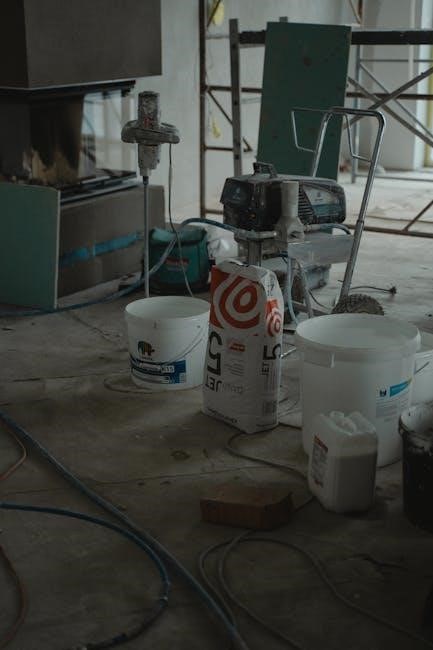
Future Trends in Floor Plan Design
Advancements in AI and VR are revolutionizing PDF floor plans, enabling immersive 3D visualizations and automated designs. Sustainability features are also becoming integral to modern floor plan creation.
AI and Machine Learning in Floor Plan Creation
AI and machine learning are transforming floor plan creation by automating tasks like layout generation and object recognition. Tools like Edraw.AI use AI to quickly convert images or PDFs into editable floor plans. These technologies enable users to generate accurate, professional-grade designs without extensive technical skills. AI also predicts design trends and optimizes spatial arrangements, making the planning process faster and more efficient. With real-time rendering and 3D visualizations, AI-powered tools are revolutionizing how architects, designers, and homeowners approach floor plan creation, ensuring precision and creativity in every project.
Integration with Virtual Reality (VR)
Integration of PDF floor plans with Virtual Reality (VR) enables immersive 3D experiences, allowing users to explore spaces virtually. Tools like Floorplanner and RoomSketcher support exporting floor plans to PDF and other formats, which can then be converted into VR-compatible models. This integration enhances visualization, making it easier for architects, designers, and clients to interact with designs in a lifelike environment. VR also aids in identifying design flaws and simplifies decision-making. Platforms like Arcadiums and Planner 5D offer VR features, enabling seamless transitions from 2D PDF floor plans to interactive 3D walkthroughs, revolutionizing the way spaces are conceptualized and presented.
Sustainability and Green Design Features
PDF floor plans are increasingly incorporating sustainability and green design elements, aiding in eco-friendly architecture. Tools like EdrawMax and Planner 5D allow designers to integrate energy-efficient layouts, natural lighting, and renewable material placements. These features help reduce environmental impact by optimizing space usage and promoting eco-conscious practices. By embedding green design principles into PDF floor plans, architects and designers can create sustainable, energy-efficient spaces that align with modern environmental goals, making PDF floor plans a cornerstone of contemporary green building initiatives and sustainable urban development strategies.